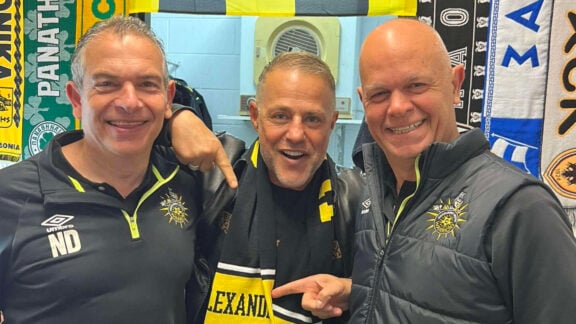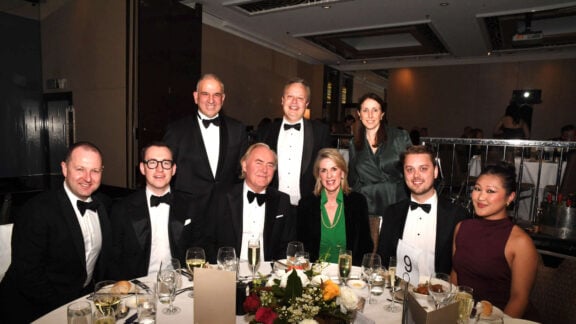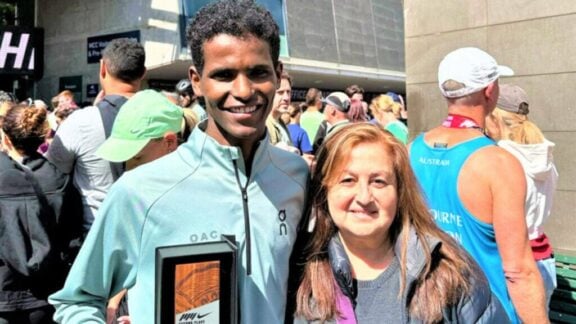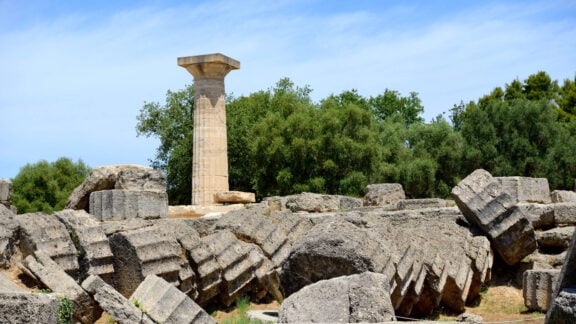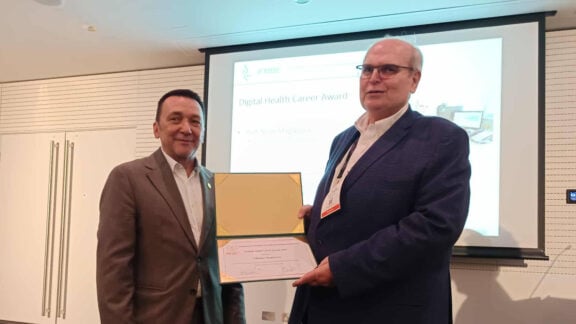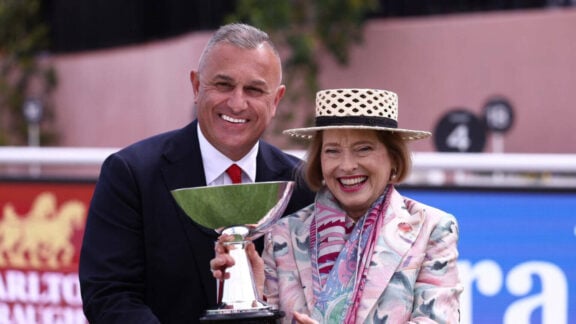A blue bead resembling an eye, often worn on a necklace or bracelet, in Greek and Middle Eastern cultures, is mean to ward off the evil eye.
This deep-rooted tradition forms the title of Emily Tsokos Purtill’s debut novel, MATIA (meaning “eyes” in Greek), where she explores the lives of four generations of women as they adapt to new countries while holding on to their heritage.
“Where is home? How long do you stay Greek and connected to your heritage through the generations?” Emily asks rhetorically in an interview with Neos Kosmos, just days after the release of her book by UWA Publishing. These questions have long intrigued her and form the central theme of MATIA.
As a third-generation Greek Australian born in Perth, Emily wasn’t the one to leave her homeland, but she says, “I can imagine just how different it must have been for the people that did.”
“It was so clear to me that all the people in my family, especially the women who I spent a lot of time with, had such different lives from my own and my mother’s.”

Emily often wondered about the feeling of belonging—how her migrant ancestors created a home in a new land, or perhaps more importantly, how they carried home with them.
The novel moves back and forth in time, unraveling defining moments in the lives of its four engaging protagonists, connecting them through a long chain of memories, secrets, dreams, and even prophecies, keeping the reader in suspense until the very end.
The story begins in 1945 with Sia, a young Greek woman migrating from Greece to Perth in search of a better life. She carries with her four prophecies from her island and four pieces of protective jewelry—matia—one for herself, her daughter, granddaughter, and great-granddaughter. With the prophecies hanging over each woman’s life, are their lives bound by fate or do they have a hand in their own destinies?
Over four generations and three continents, from Greece to Perth to New York and back again, Emily Tsokos Purtill writes a rich and moving tale.
“I have always found so interesting, that a device like the mati, can hold so much power for some – I remember, standing in church with my great grandmother, great aunt, and mom and they would all have the mati bracelets on.”

Emily has always been fascinated by the beliefs of her ancestors—the superstitions, the prophecies, and the oracles.
“There’s been so many ways that people have looked at the world that are not always based on the science that we know. And though it’s easy to dismiss these beliefs, I always thought that the older women in my family seemed so wise in a different way to today.
There are different ways to be smart or to be wise. Some of them had never has a proper education, but they were still really smart and amazing.”
With roots in the islands of Evia, Rhodes and Kastelorizo, Tsokos Purtill created an imaginary island in Greece to depict the ancestral home of her four protagonists.
MATIA began to take shape ten years ago while the author was living in New York with her young family, though she says she had been thinking about the book for her whole life.

Growing up, Emily feels fortunate to have spent so much time with her two great-grandmothers and grandmothers, listening to their stories. She became intimately familiar with the traditions and rituals of her heritage, attending weddings, kitchen teas, and other family ceremonies. From making traditional sweets to preparing the marital bed, Emily witnessed these customs firsthand.
“I have been thinking about those moments my whole life – how they kept their traditions going for so long over the years.
“From mother, to daughter, to granddaughter and I got to see it, and be part of it, which was amazing. I wanted to somehow write about all these traditions and capture these moments in time, so they wouldn’t be forgotten.”
Through the eyes of four resilient women in MATIA, Emily Tsokos Purtill captures the complexities of migration, identity, and the strong hold to heritage. As each generation navigates the challenges of a new world, they carry with them the timeless wisdom of their ancestors, through traditions, memories, and the stories they pass on.

